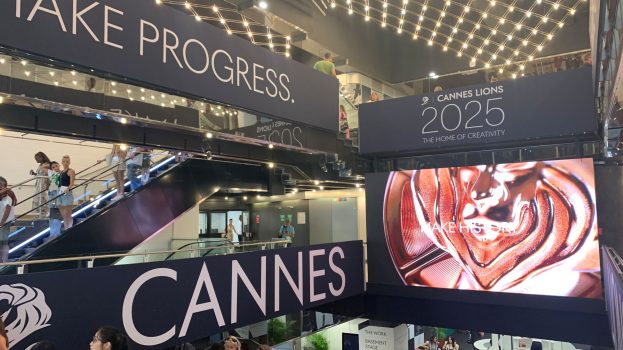By Chris Stefanyk
Every June, Pride month arrives with a stream of branded rainbow flags. And while it’s easy for marketers and brand leaders to pat ourselves on the back for participating, these thirty days in June don’t do justice to the true importance of Pride — and the intersectional communities that built it from the ground up — in building a better world for everyone.
It’s time for brands to stop thinking of Pride as a “campaign,” and start thinking of Pride as a non-stop commitment: to human rights, equity, intersectional allyship, and elevating LGBTQ2S+ communities all year long.
To help me articulate why this shift is so crucial, I asked Jennifer Boyce, director of communications at Egale Canada, to offer her expert advice.
“I don’t think it is a question right now whether brands or companies should be thinking about creating content for 2SLGBTQI people,” Boyce said. “Whether you know it or not, there are LGBTQ2S+ people in your audience hoping to feel reflected in your content.”
The fight for intersectional LGBTQIAP+ equality is more important than ever — and brands have the platform, and the means, to create actual change.
Pride Month is a time to acknowledge the ongoing challenges faced by LGBTQ2S+ people and simultaneously celebrate the beautiful diversity of the community. For brands, it can be seen as a time to reiterate support and align a company’s values with those of the LGBTQ2S+ community. However, some brands might think that slapping a rainbow sticker next to your logo
for the month will suffice.
“Consumers today are smart and expect more depth and integrity from the brands they champion, and most of the time they will do the digging to find out what a company’s true colours (or intentions) are,” said Boyce. “Building that foundation of diversity and inclusion across your company before hopping on the Pride train could mean the difference between a successful campaign and a PR nightmare.”
Every brand involved in Pride needs to take a hard look at their work outside of June, and ask themselves if their rainbows are hiding 335 days of apathy. If your company genuinely wants to support the movement, your Pride campaign needs to move beyond awareness, instead handing the microphone over to members of the community and offering sustained support throughout the year — not just in June.
Stop ‘seasonal’ marketing campaigns
June is Pride month, but the fight for LGBTQ2S+ equality doesn’t end on July 1. Approach Pride with an “always on” mindset, and find ways to continue donating, raising awareness, and giving voice to the community all year long.
“The year is full of days that are dedicated to celebrating or creating awareness of some of the ongoing issues facing LGBTQ2S+ people. Being aware of and able to participate in these conversations as a company or brand is essential today,” Boyce said.
Intersectionality is a must
“When we think about marketing and content for the LGBTQ2S+ community as a single audience, we are doing it wrong and potentially even creating harm. While there has been a lot of progress in recent years, systemic racism and oppression mean
that this ‘umbrella community’ primarily reflects white, cisgender lesbian and gay people,” Boyce said. “Some companies are starting to catch on to this and are proactively uplifting voices of more marginalized identities within LGBTQ2S+ communities.”
Implement values in your workplace
Supporting the LGBTQ2S+ community starts in your own backyard. At Wattpad, we offer gender neutral bathrooms and an LGBTQ2S+ affinity group for support and collaboration. When new employees join Wattpad, we ask for their preferred pronouns and share the response with everyone at the company. You can’t build an inclusive team if you don’t have inclusive values and an inclusive company culture. Boyce recommends starting at the foundation with workplace inclusion training, like the workshops offered by Egale.
Seek guidance and advice from experts
“I can’t stress enough how important it is to work with charities, non-profits and frontline services that have a relationship with
LGBTQ2S+ communities and who can help inform content and messaging to ensure you aren’t causing more harm than good with your campaign,” Boyce said. Acknowledge that you don’t have all the answers — especially if you don’t identify as LGBTQ2S+. Go to the experts.
Chris Stefanyk is head of brand partnerships at Wattpad.























